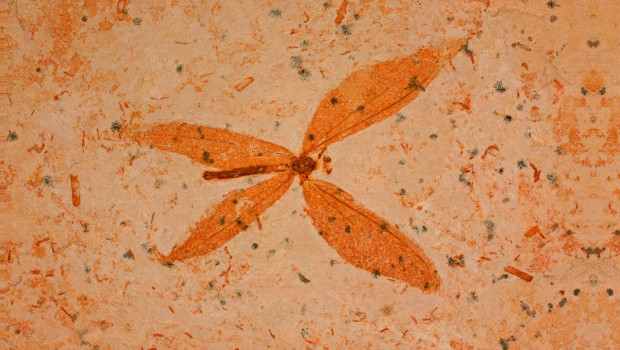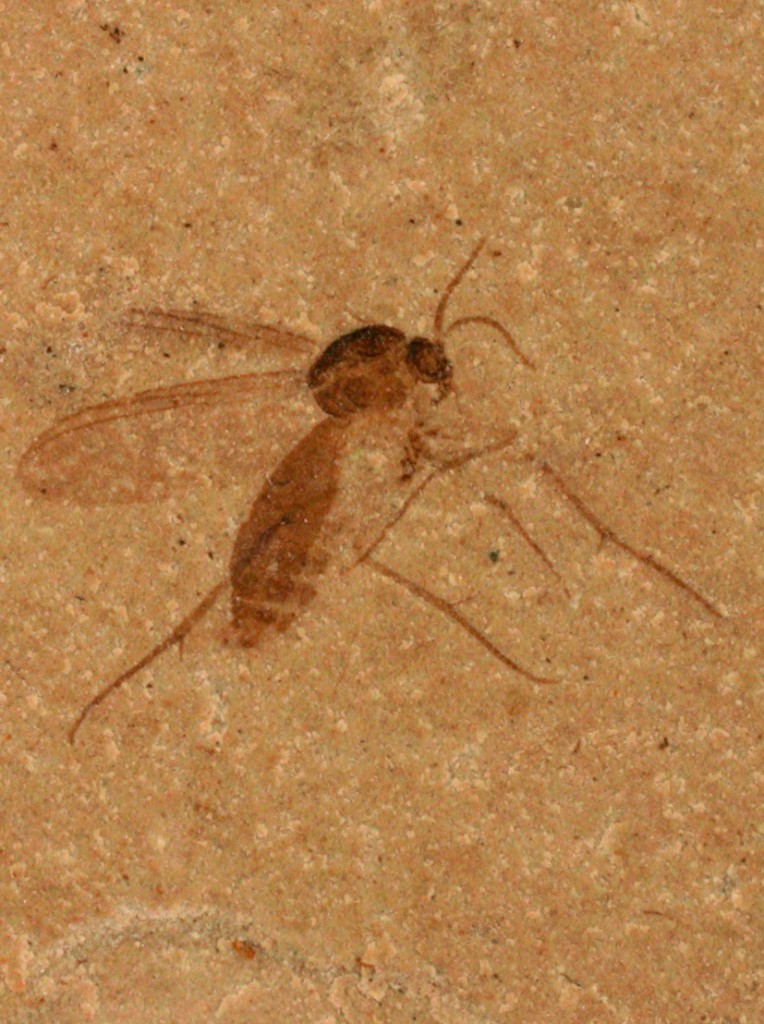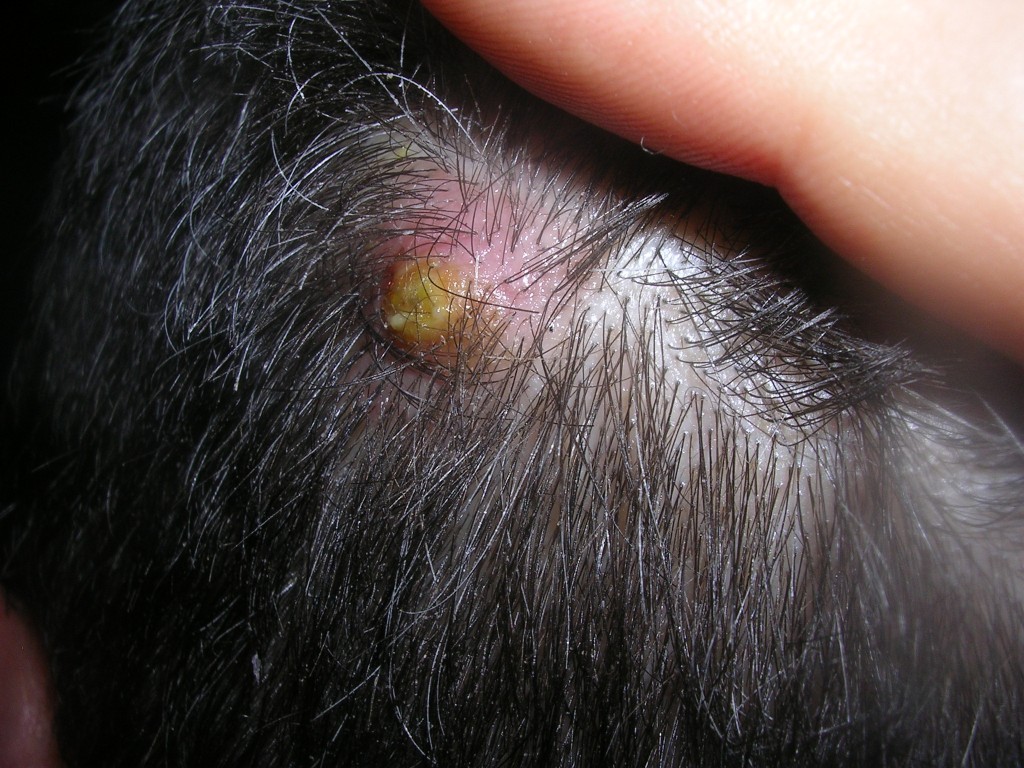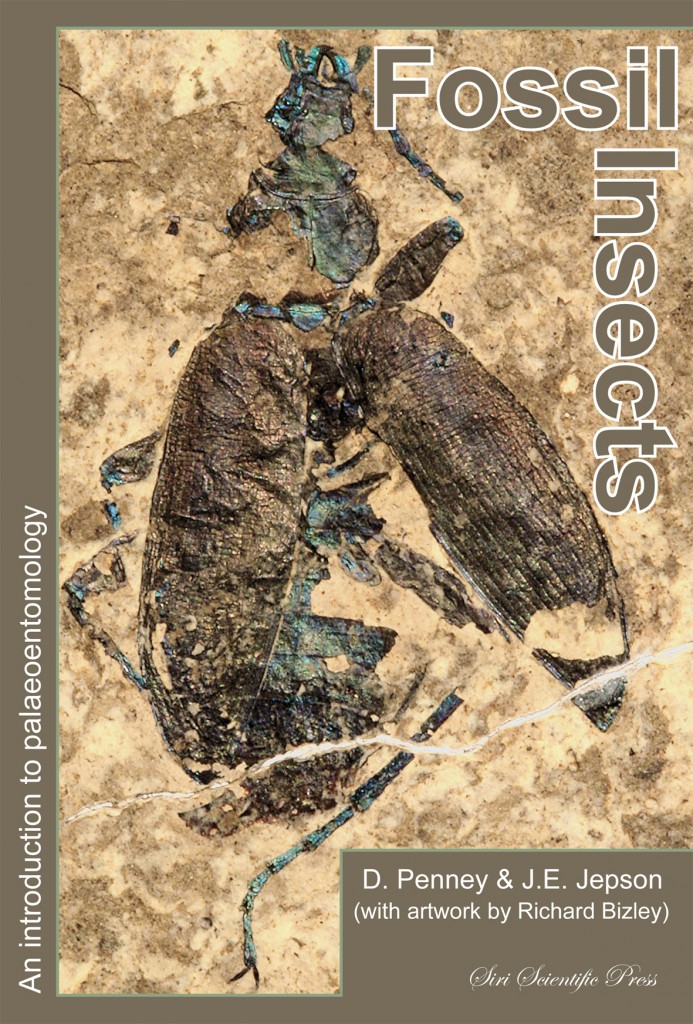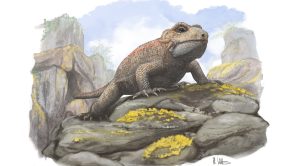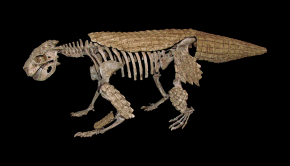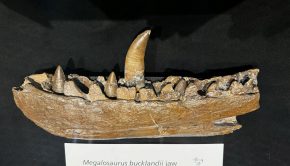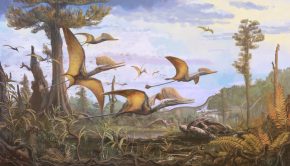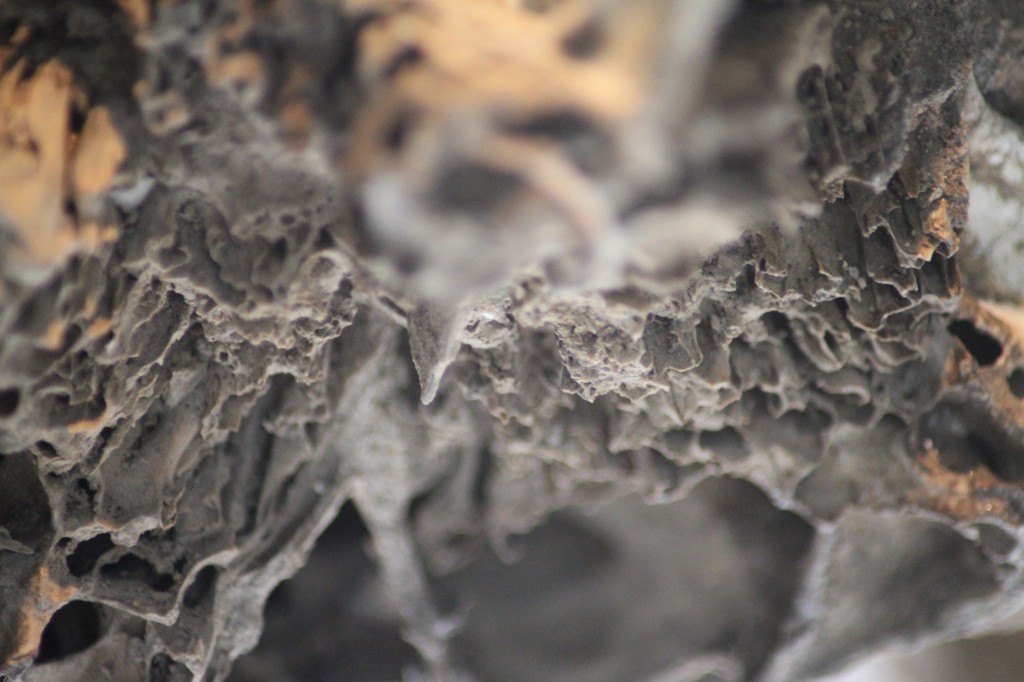Episode 41: Insects
Insects are the most abundant and diverse group on animals on the planet today. Would they therefore also be expected to have the richest fossil record? When did they first evolve and how rapid was their diversification? Do we give enough attention to the evolution of insects?
To get answers we spoke to Dr. David Penney, honorary lecturer at the University of Manchester and founder of Siri Scientific Press. He has just recently published an overview of palaeoentomology entitled ‘Fossil Insects’. We’ve a copy of this book to give away courtesy of Siri Scientific Press. You can enter the competition on our Facebook page.
Part1
Podcast: Download (Duration: 31:13 — 42.9MB)
Part 2
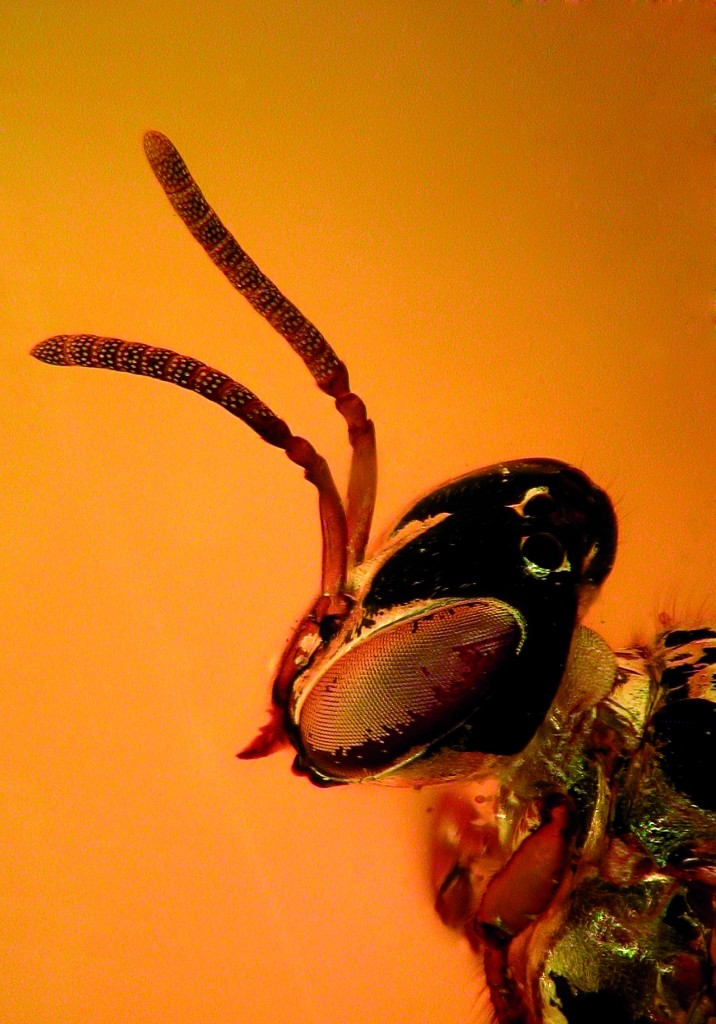
Head of a small (body length 4 mm) stingless bee Proplebeia dominicana (Hymenoptera: Apidae) in Miocene Dominican amber, showing the outstanding preservation of this fossil resin. Photo credit Dr David I. Green.
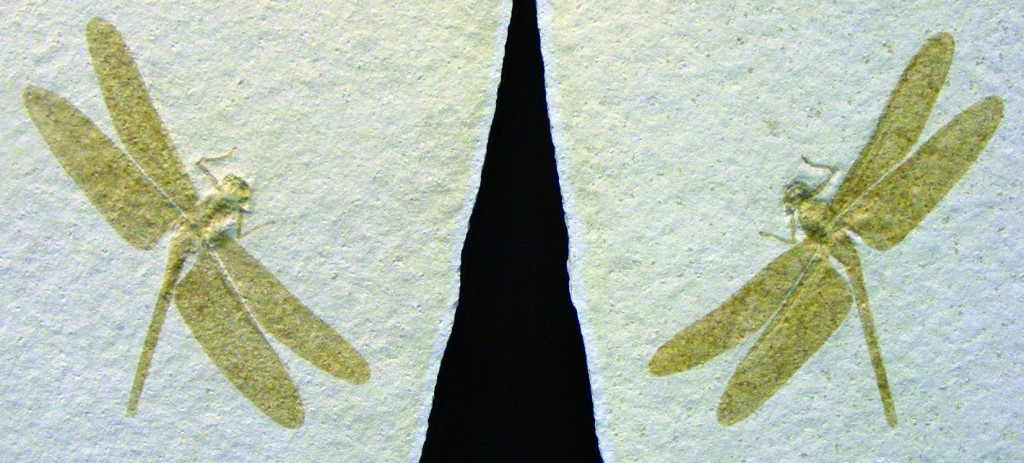
Part and counter-part slabs of a fossil dragonfly from the Jurassic of Solnhofen, Germany. Photo credit Dr David Penney.
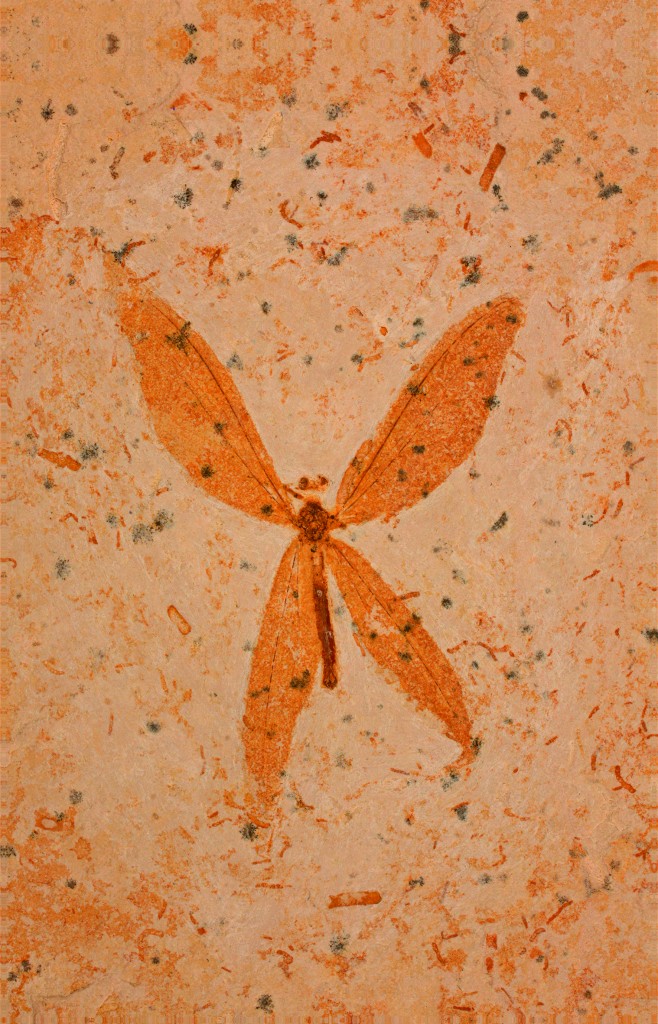
Lacewing (Neuroptera: Araripaneuridae) from the Cretaceous Crato Formation, Brazil. Photo credit Dr James E. Jepson.
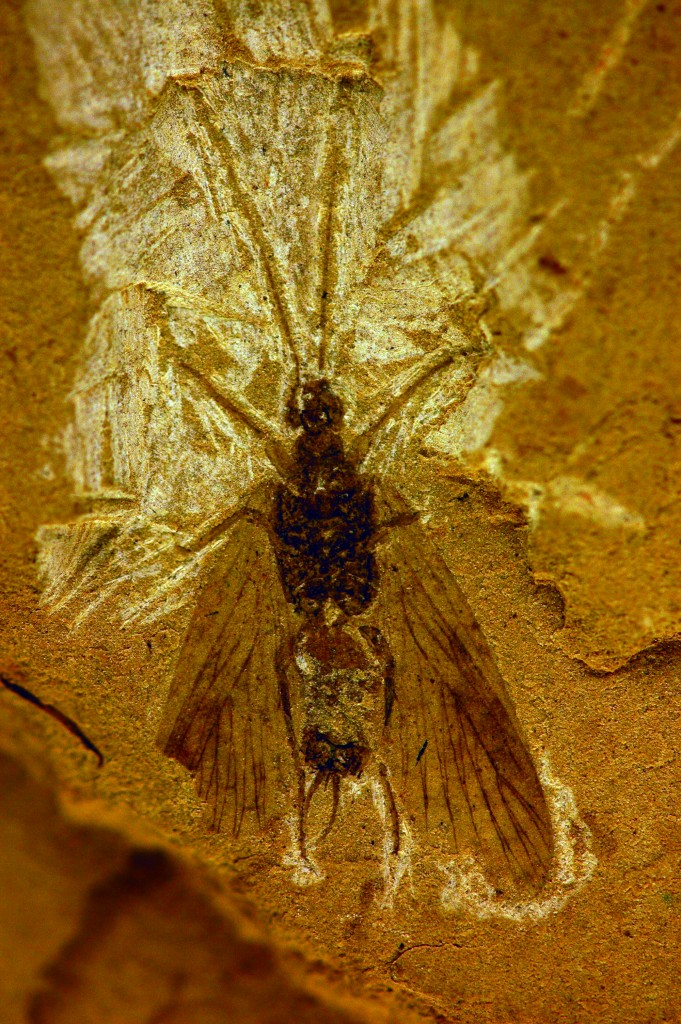
Permonika aestiva (Miomoptera: Palaeomanteidae) from the Permian of Tshekarda, Urals, Russia. Photo credit Prof Alex Rasnitsyn.
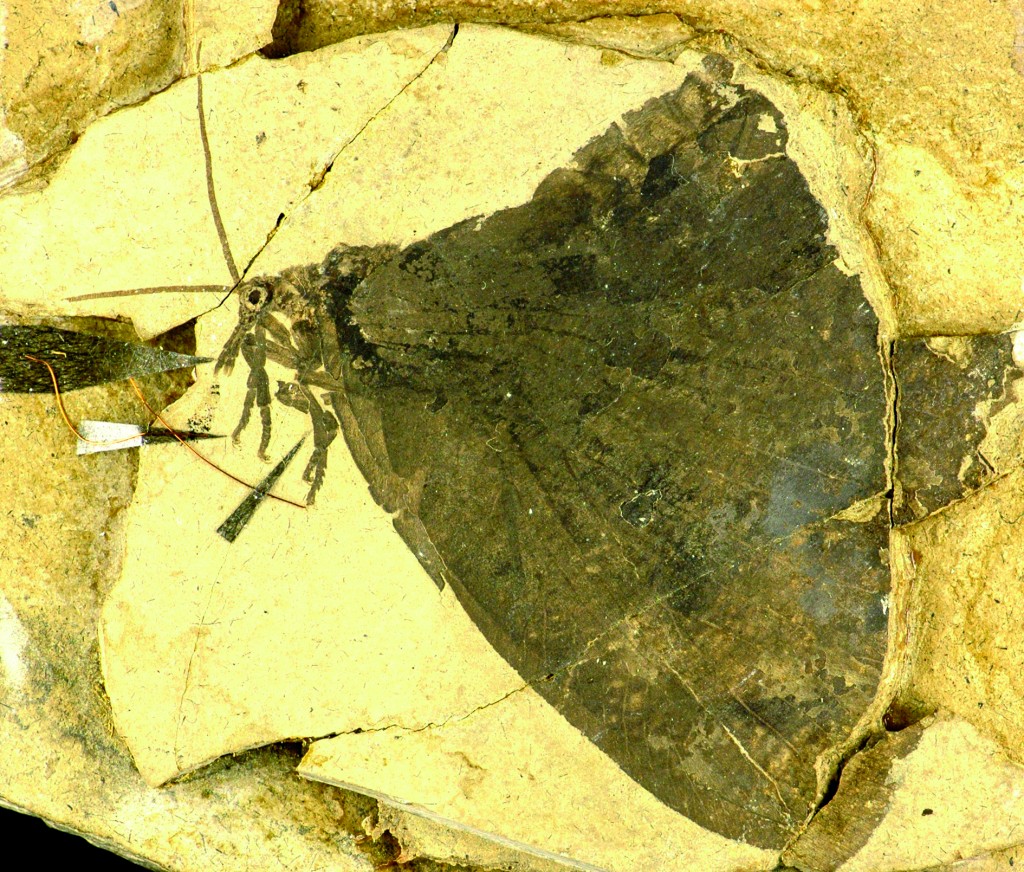
Neuroptera (Kalligrammatidae) from the Upper Jurassic of Karatau, Kazakhstan. Photo credit Prof Alex Rasnitsyn.
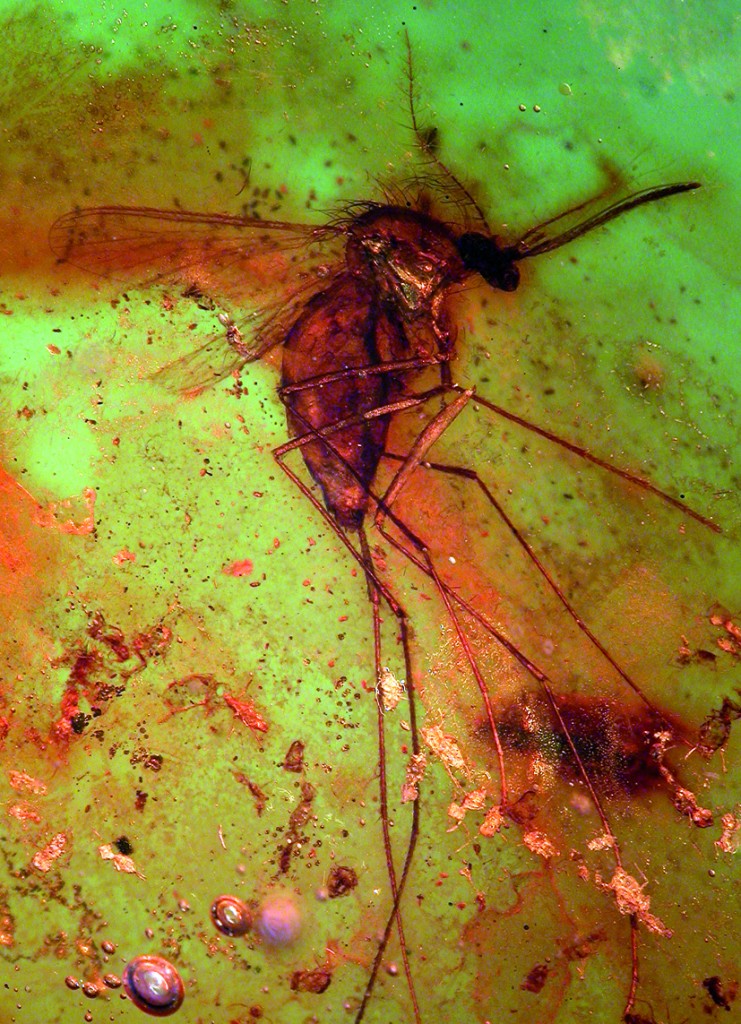
Female mosquito Culex sp. (Diptera: Culicidae) in Miocene Dominican amber. Photo credit Dr David I. Green.
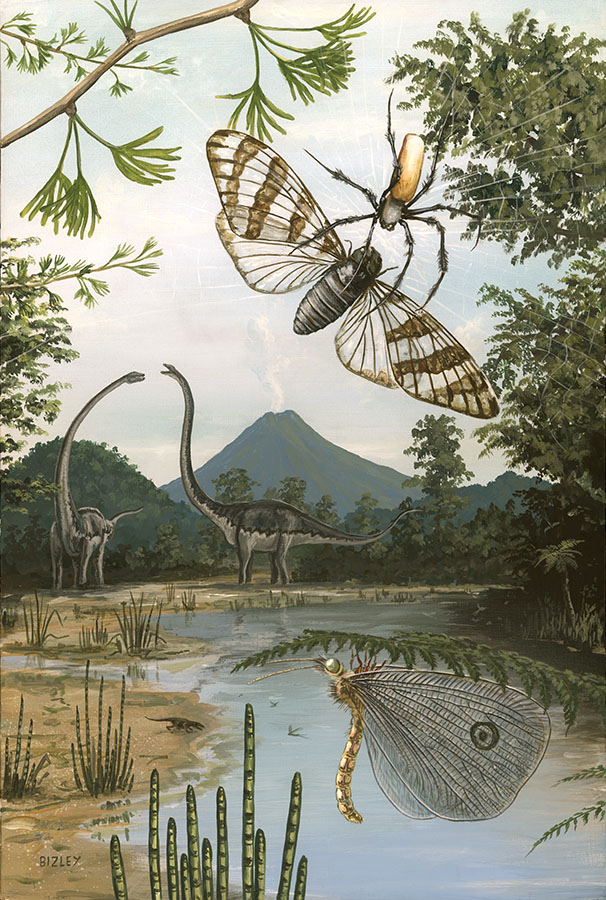
Jurassic palaeohabitat from China. The picture depicts the giant ‘orb-web’ spider Mongolarachne jurassica (Mongolarachnidae) catching a giant cicada Palaeontinodes reshuitangensis (Hemiptera: Auchenorrhyncha: Palaeontinidae) in its web. In the background are a pair of sauropods Omeisaurus tianfuensis. Drinking at the waters’ edge is the earliest placental mammal Juramaia sinensis, whilst mayflies of the genus Epicharmeropsis (Ephemeroptera: Hexagenitidae) flit around above the surface. The large insect in the foreground is a large butterfly-like neuropteran Limnogramma hani of the extinct family Kalligrammatidae. © Richard Bizley

